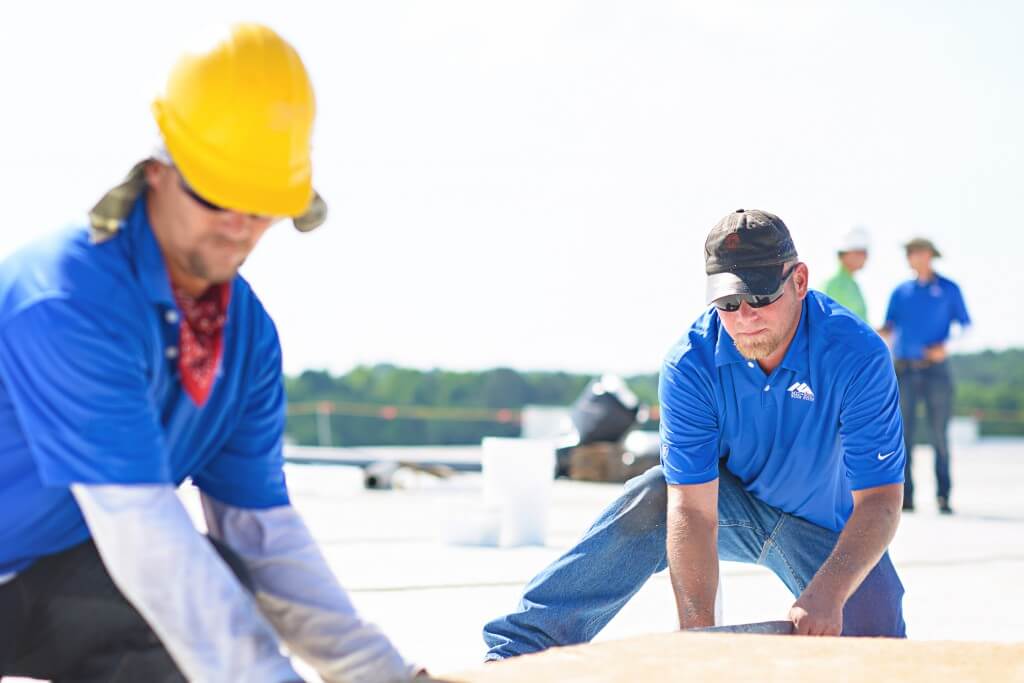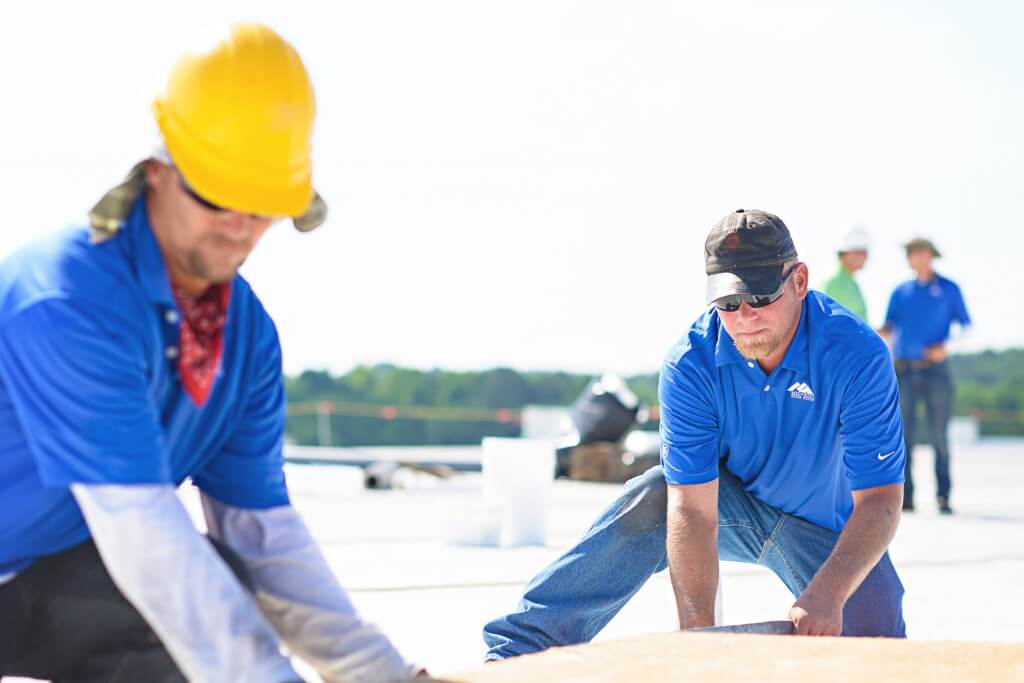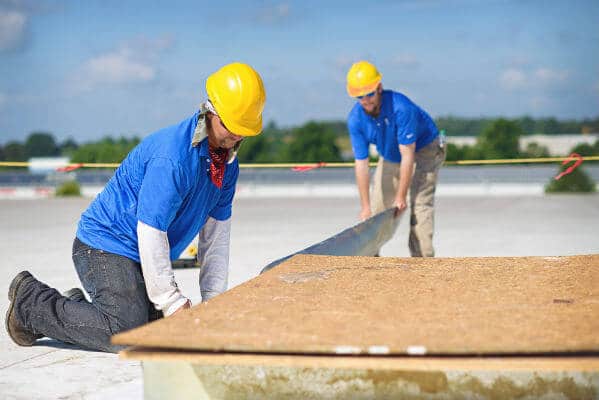Looking for a Leak: The Long and Winding Road


Your ability to complete the complicated and crucial task of identifying and fixing a leak is directly proportional to how well you understand your roof.
About Your Roof
A single-ply roof actually has three layers: The outer weatherproofing membrane, the tough, rigid mesh in the middle and the backing layer beneath, which comprises nearly half of the entire roof covering.
The 4’x8’ polyiso insulation boards most commonly found on commercial roofs under the single-ply membrane are fastened with screws in a checkerboard pattern to a metal deck beneath. So if a toolbox is dropped or a hammer is carelessly tossed aside or an evil golfer jumps up and down with metal cleats all night while you’re at home, a cut or a puncture can tear through the roof’s outer weatherproofing membrane.
The Waterpark Within
The next time it rains, water seeps in. That water sits on top of the polyiso insulation boards and—like a burglar—looks around for a gap between two boards to squeeze through. When it finds one, which it always does, you have water making direct contact with the metal deck beneath.
From there, the water runs around on the metal deck, commanded by gravity to find a way to get down even further. The metal deck is repeatedly lapped over itself. The water finds a gap between two laps and, poof—you have a leak inside your building.
From the perspective of a person inside the building, it appears that water is coming in from wherever they happen to see the leak. The winding, twisting maze through which the roaming water wandered on its way there, however, means that the leak could actually have originated 300 feet away.
Be patient with your contractor — a good one will have a lot of questions to figure out where to even start the complicated job:
- Does the leak only happen when it rains?
- Does it leak only during a particular kind of rain?
- How long has the leak been going on?
- Have you only spotted its exit in one place?
Tracking a leak back to the source requires troubleshooting, critical thinking and yes, a little bit of luck. But most importantly, it requires experience. It is a difficult, multi-faceted project that often requires a mix of detective work and critical thinking. Leaks never fix themselves and getting it done right is infinitely better than having to deal with a reoccurring issue.
LIKE WHAT YOU JUST READ?
Sign up for our newsletter to get fresh articles, updates and more!
Assess, Report and Decide: Get to Know Your New Building’s Roof
If you’re considering buying a new building, the very first item on your list should be to get an assessment of the roof’s condition. This analysis can prevent surprises down the line and—if the roof needs work—it can have a dramatic effect on the price you wind up paying for the building.
Why You Need A Roofer Onsite When You Install Your HVAC System
It’s common to place the heating, ventilating and air conditioning (HVAC) systems for large buildings on the roof. A successful rooftop HVAC installation usually involves the collaboration of an entire team of workers, so that issues related to the roof, structures, electrical and HVAC can be discussed beforehand. If an HVAC system is not coordinated…


